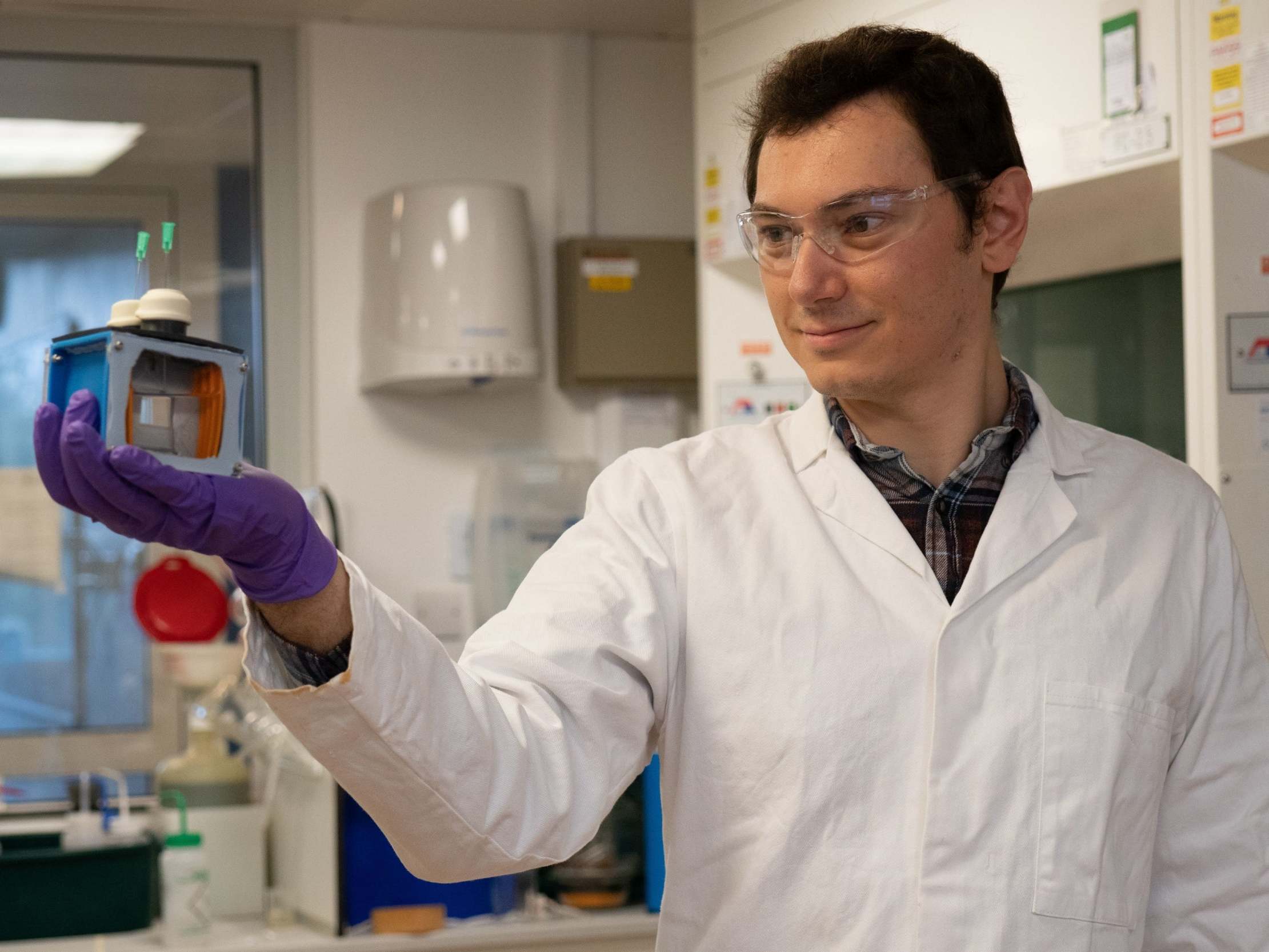Artificial leaf could turn sunlight into sustainable alternative to petrol, say scientists
Device could also make clean gas found in fuels, pharmaceuticals and plastics, it is hoped
Your support helps us to tell the story
From reproductive rights to climate change to Big Tech, The Independent is on the ground when the story is developing. Whether it's investigating the financials of Elon Musk's pro-Trump PAC or producing our latest documentary, 'The A Word', which shines a light on the American women fighting for reproductive rights, we know how important it is to parse out the facts from the messaging.
At such a critical moment in US history, we need reporters on the ground. Your donation allows us to keep sending journalists to speak to both sides of the story.
The Independent is trusted by Americans across the entire political spectrum. And unlike many other quality news outlets, we choose not to lock Americans out of our reporting and analysis with paywalls. We believe quality journalism should be available to everyone, paid for by those who can afford it.
Your support makes all the difference.Scientists have developed an artificial leaf that they hope could one day provide a sustainable alternative to petrol.
The imitation foliage mimics photosynthesis, the chemical reaction by which plants convert sunlight, carbon dioxide and water into energy.
Researchers from the University of Cambridge devised the device to create syngas, a gas produced from fossil fuels. They believe it could eventually lead to the development of a sustainable liquid fuel substitute for petrol or be used in other commodities such as pharmaceuticals, plastics and fertilisers.
“You may not have heard of syngas itself, but every day you consume products that were created using it,” said Erwin Reisner, a professor in the university's chemistry department and a senior author of the research.
“Being able to produce it sustainably would be a critical step in closing the global carbon cycle and establishing a sustainable chemical and fuel industry.”
Professor Reisner and his team managed to ensure the device does not release any additional carbon dioxide into the atmosphere, because of the combination of materials and catalysts used.
The process works by using two light absorbers, similar to the molecules in plants that harvest sunlight, which are combined with a catalyst made from cobalt.
When placed in water, one light absorber uses the catalyst to produce oxygen, while the other carries out the chemical reaction that reduces carbon dioxide and water into carbon monoxide and hydrogen, forming the syngas mixture.
The researchers also discovered the artificial leaf still works efficiently on cloudy or rainy days.
“This means you are not limited to using this technology just in warm countries, or only operating the process during the summer months,” said Virgil Andrei, a PhD student and first author of the paper, published in the Nature Materials journal.
“You could use it from dawn until dusk, anywhere in the world.”

Mr Andrei added: “We are aiming at sustainably creating products such as ethanol, which can readily be used as a fuel.
“It’s challenging to produce it in one step from sunlight using the carbon dioxide reduction reaction.
“But we are confident that we are going in the right direction, and that we have the right catalysts, so we believe we will be able to produce a device that can demonstrate this process in the near future.”
Professor Reisner added: “What we’d like to do next, instead of first making syngas and then converting it into liquid fuel, is to make the liquid fuel in one step from carbon dioxide and water.
“There is a major demand for liquid fuels to power heavy transport, shipping and aviation sustainably.”

Join our commenting forum
Join thought-provoking conversations, follow other Independent readers and see their replies
Comments